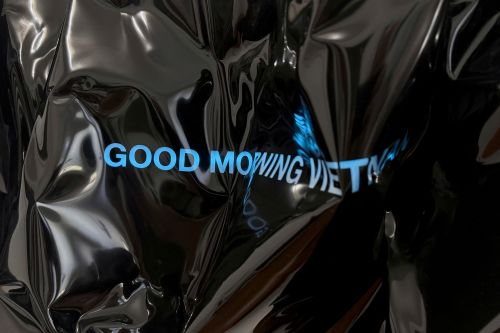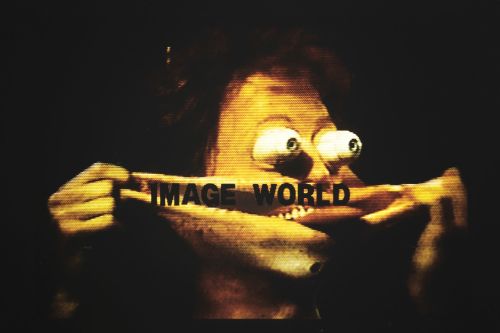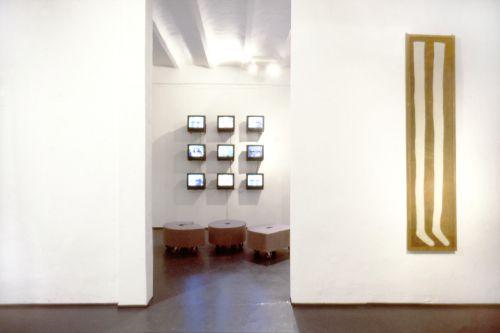Gretchen Bender (1951–2004) was an influential figure in late twentieth-century American art and a key observer of the effects of the inundation of mass media on the human experience. The immersive “electronic theater” installations that she produced in New York in the 1980s are groundbreaking mixtures of video, sound and performance that subverted the power of corporate imagery on collective consciousness.
Bender emerged in the early ’80s in New York, primed to participate in the artists of the Pictures Generation’s use of appropriation with her experience at a feminist and Marxist screen-printing collective in Washington DC, where printmaking could provide a quick way to circulate important ideas and ideologies. For her, it was not enough to be able to only re-contextualize images; they also had to be hyper-current and immediately relevant so as to subvert the culture as it was developing. The Pleasure is Back works, a series of wall-based works comprised of silkscreens printed on tin juxtaposing works by her artistic peers, often men, with imagery taken from current advertising campaigns. This strategy of appropriation aligned her with artists of the Pictures Generation, such as Robert Longo, Cindy Sherman, Louise Lawler, Sherrie Levine, Barbara Kruger and Richard Prince. Her eventual emphasis on video and television as source material, and her embrace of spaces beyond galleries and institutions, set her apart from her peers.



































































































